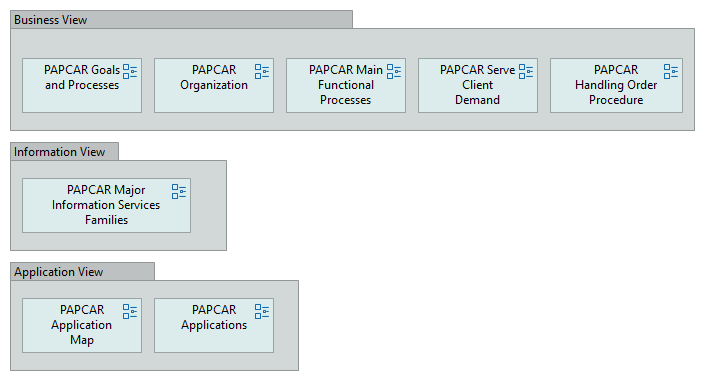
As for most firms born before the generalized usage of information technologies, the already existing information system does not come from an overall conception that would have aimed all in all at the optimal support of operational activities and the pertinent support of management activities and that would have anticipated the organisational transformations expected in the medium and longer term. On the contrary, the information system in place grew by the adjunction in time of computer applications conceived and put in place in a purely pragmatic approach to search for efficiency. The first cartography presented in "PAPCAR Application cartography" situates the different computer applications put in place within PAPCAR units and that support together the information system of PAPCAR.
We will first examine the content and usefulness of this system, we will identify the limits and wants within the present organisational context, and then we shall develop the different possible evolution scenarios, as to be able, in a first place, to overcome the daily problems met, as to anticipate in a second place a more strategic focus on medium and long term.
As to describe and manipulate the different components of the Information System (IS), we shall follow the "Urbanism" canvas put forward by city planning practitioners and that tries and answer the following questions:
• To what jobs and what stakes does the IS contribute?
• By what informational services does the IS contribute to the setting up of an organization capable of answering these stakes?
• What definitions and management rules are placed out and conveyed through these services?
• By what means are elaborations regarding technologies as well as in what overall applicative architecture are these services actually delivered?
• What is the infrastructurinfrastructure that allows services to ensure the performing, availability and required security levels?